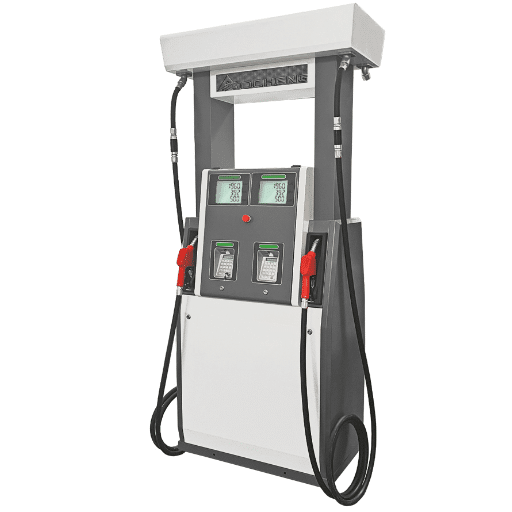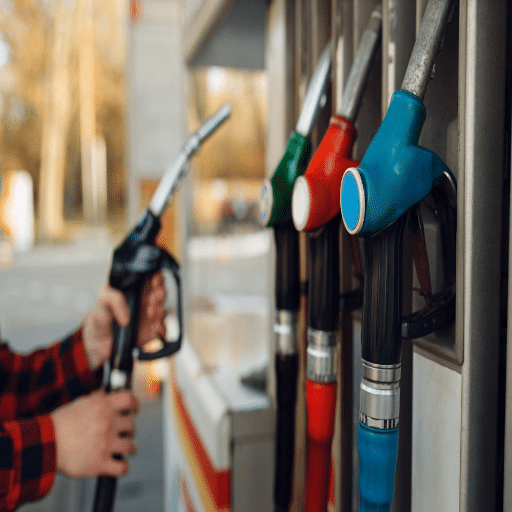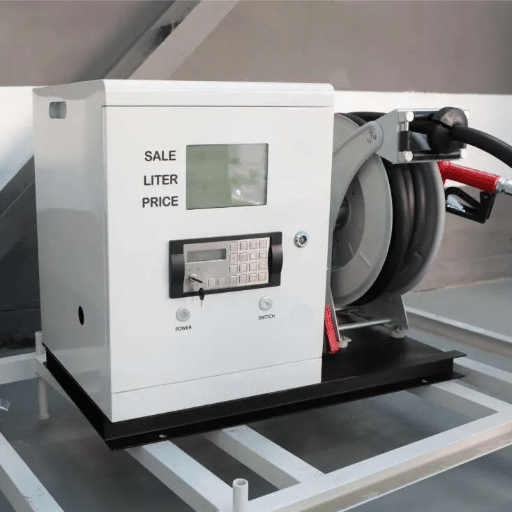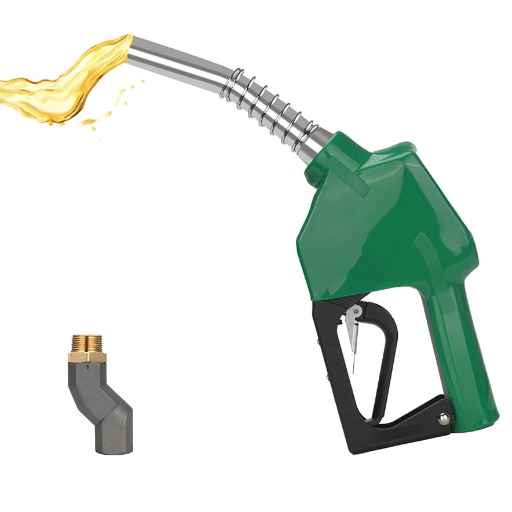Oil tanks are highly dependent upon industries ranging from energy to manufacturing, and performing their function is dangerous. First and foremost among unfortunate scenarios is an explosion, causing damage, ecological hazards, and even the potential loss of human life. To mitigate such risks, stringent explosion-proof specifications and standards have been laid down to ensure safety and compliance. This blog post steps you through some considerations for designing an explosion-proof oil tank, leaving you with a clear understanding of the pertinent regulations, technologies, and commonly accepted procedures. It will be an exciting trip through explosion-proofing for anyone in the industry or even interested in safety protocols.
What are the Main Causes of Tank Explosions?
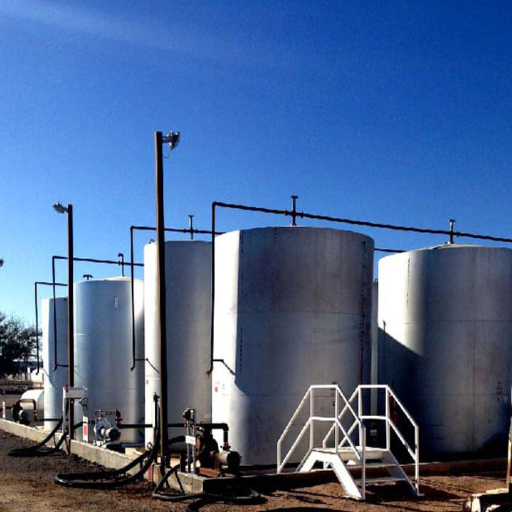
Tank explosions result from several combinations of dangerous substances with inappropriate handling or maintenance. They may occur upon accumulation of flammable vapors, use of an ignition source such as sparks or an open flame, and/or lack of adequate ventilation. Structural failure may also be another major cause due to corrosion or improper design. Besides, improper filling of tanks, not carrying out regular inspections on the tanks, and not observing safety rules can also lead to the explosion of a tank. Knowledge of these aspects and how to control them can help prevent such threatening incidents.
How does Static Electricity Contribute to Tank Explosions?
Static electricity in a flammable atmosphere or with combustible materials is one of the most significant contributors to tank explosions. Charges initially accumulate in the filling, emptying, or cleaning processes due to the wind created by the fluid or dry materials passing over surfaces. If not discharged correctly, coupled with any conductor, this charge would cause a spark that could ignite flammable vapors present either inside or around the tank.
Studies show that static discharge sparks can attain temperatures beyond 1,000°F (538°C), far higher than ignition temperatures for most volatile substances such as gasoline or ethanol, which have flash points well below this temperature range. The lack of good grounding/bonding increases the risk by allowing static electricity to build up to dangerous levels. Proper grounding, anti-static coatings, and compliant equipment with all the relevant safety standards in any industry working with combustible materials are necessary to avoid these hazards.
What Role Does Ignition Source Play in Explosion Hazards?
Ignition sources create explosion hazards, specifically in the presence of combustible materials or vapors. Three conditions are necessary for an actual explosion: fuel, oxygen, and an ignition source, often considered the fire triangle. Ignition sources can come from various human activities or equipment, such as open flames, hot surfaces, electrical sparks, or static charges.
Data reveals that a substantial proportion of ignition incidents are caused by static electricity, especially in the petrochemical and manufacturing industries. For instance, it results from static discharge where temperatures of above 1,500°F (815°C) can be generated, well above the temperature required for the ignition of many volatile chemicals, including propane, which itself ignites at around 842°F (450°C). Then, one is reminded that improperly insulated electrical equipment would constitute a spark, igniting flammable gases or dust clouds, followed by catastrophic destruction through exploding. It is reported that approximately 22% of industrial explosions worldwide are due to faults in electrical equipment.
To control the hazards from potential ignition sources, industries have implemented a few safety provisions, such as using intrinsically safe equipment, explosion-proof enclosures, and maintenance protocols applied with rigour. Such measures are intended to prevent ignition and to ensure compliance with international safety standards such as the ATEX or NFPA guidelines. With an understanding of how ignition sources impact different processes involved, companies will have reduction strategies established for creating safer working environments and mitigating explosion threats.
How Can Pressure Accumulation Lead to an Explosion?
Pressure accumulation may cause an explosion, especially in confined environments or systems with gases and liquids. If the pressure inside a container or system builds beyond its set design limits, it imposes enormous stresses on the structural elements. When the pressure exceeds the material’s tensile strength, the container ruptures, violently expelling energy into the ambient. Studies conducted for prevention have identified industries working with pressurized gases, such as petrochemical plants, as especially prone to such hazards.
One such case occurs during a boiling liquid expanding vapor explosion (BLEVE), where a sudden surge in temperature practically boils the liquid, which immediately vaporizes, leading to a grievous containment failure. Data show that a slight increase over the pressure limit set, 1 or 2 psi range, can have disastrous consequences in sensitive systems.
Preventive measures that ensure regular pressure monitoring, application of pressure relief valves, and adherence to relevant codes in vessel design (such as ASME standards) must be instituted. Not only would they save infrastructure from these devastating incidents, but also the lives and environment of our people from the harmful aftermath of over-pressurization accidents.
How to Ensure Oil Tank Safety in Storage Facilities?

Regular Inspections: Carry out inspections daily or at a set time of year to detect corrosion, leaks, or structural deficiencies in oil tanks that contribute to failures and breach safety standards.
Pressure Management: Install relief valves and advanced pressure monitoring systems to ensure that tanks maintain an adequate pressure at all times, thereby reducing the risks of over-pressurization.
Leak Detection Systems: Leak detection systems should be installed so spills or leaks can be promptly detected and mitigated, thus minimizing the contamination of the environment and any hazards.
Proper Ventilation: Ensure that the tanks have adequate ventilation systems installed to avoid the buildup of flammable vapors, which can lead to fire or explosion.
Personnel Training: Train personnel in safety operating procedures, emergency response, and handling hazardous materials to improve safety practices.
These activities greatly enhance the safety of oil storage facilities, protecting the environment and personnel.
What are the Key Inspection Protocols for Storage Tanks?
Proper inspection is necessary to ensure the storage tanks’ safe operation and longer service life. Key inspection processes include the following:
External Visual Inspection: Conduct periodic external inspections to find signs of corrosion, cracks, deformation, leaks, or physical damage on the tank’s surface and its other components, including nozzles, manholes, and foundations.
Internal Inspection: Periodically check the interior for corrosion, sludge buildup, or material degradation. In such cases, emptying and cleaning the tank to allow a thorough assessment is usually necessary.
Non-Destructive Testing (NDT): Assess the tank’s structural integrity using NDT methods, such as ultrasonic testing, radiographic testing, or magnetic particle inspection, to detect subsurface flaws.
Inspection of Protective Coatings and Linings: Protective coatings or linings should be inspected because their integrity is crucial in preventing corrosion and contamination of stored materials.
Foundation and Structural Inspection: Inspect the tank’s base and foundation for settlement, cracks, or other structural issues affecting its stability.
Compliance with Standards: Ensure inspections are carried out according to any industry standards applicable in that region, e.g., API 653 or STI SP001, depending on tank type and use.
The storage tanks shall remain safe and usable through these protocols and meet all environmental and safety regulations.
How Does Fire Prevention Minimize Explosion Risks?
Fire prevention works alongside measures for eliminating sources of ignition, controlling flammable substances, and ensuring strong emergency responses to prevent an explosion from happening. Proper ventilation to discharge and ventilate combustible gases is one of the optimal mechanisms: this reduces the chances that the fuel-air mixture can achieve gas concentration levels for an explosion. Studies suggest a well-designed ventilation system can minimize gas accumulation risk by about 80%.
Other measures should include applying fire-resistant materials and coatings on the floor and walls. Such materials delay fire propagation long enough for intervention. For example, an intumescent coating will expand under heat to create an insulating barrier that helps to protect underlying structures against extreme temperatures.
Periodic electrical maintenance and inspection are advisable to prevent ignition sources caused by faulty electrical wiring or sparking. Data attests that almost 25% of industrial explosions are caused by electrical faults, thus indicating the need to improve inadequate systems.
Another prevention method includes installing active fire suppression systems that activate sprinklers or foam to detect and suppress fires before a fire develops into an explosion event. For example, fire sprinkler systems have demonstrated the ability to reduce property loss from an industrial fire by around 65%.
Finally, training employees in fire prevention procedures and strict enforcement of safety codes will ensure a well-equipped workforce to deal with fire hazards. Comprehensive training is essential in sectors dealing with dangerous substances, where any minor mishap can have disastrous results.
Such an array of fire prevention measures greatly diminishes the possibilities of explosions in the facility, saving lives and property while maintaining safe operating standards.
Which Maintenance Practices are Crucial for Oil Storage Tanks?
Proper maintenance of oil storage tanks is critical for safety, environmental protection, and operational efficiency. Here are some essential maintenance procedures that facilities should have in place:
Regular Inspection: Periodical inspections are essential for identifying structural weakness, corrosion, or leakage issues. Relevant standards, such as API 653, state inspection frequencies, and detailed guidelines for tank integrity evaluation are also needed. Modern techniques, such as ultrasonic inspection and magnetic flux leakage testing, facilitate the inspection of both internal and external surfaces.
Corrosion Prevention: Corrosion is the major contributor to tank failure. Measures such as cathodic protection, protective coatings, and construction with corrosion-resistant materials will maximize the tank’s service life. One study reported that corrosion rates can be reduced by up to 80% through cathodic protection and thereby improve tank life.
Leakage Detection Systems: Modern leak detection systems installed in tanks help identify any spill or seepage at an early stage. These systems provide real-time information and alarms through monitors of acoustic detection or temperature sensors, preventing contamination or expensive cleanup operations.
Regular Cleaning: Over time, sludge, sediments, and water conglomerate inside the tanks, causing blockage or contamination. Hence, they require scheduled cleaning, usually done once or twice a year, depending on the usage. Cleaning enhances product quality and prevents microbial growth, which may damage the internal surface.
Ventilation and Vapor Control: Proper upkeep of venting and vapor control systems prevents the accumulation of explosive gases and reduces emission risks. Regular checks and replacements of damaged seals or gaskets will keep these systems efficient.
Repairs and Upgrades: To maintain the tank’s safety, wear and tear must be managed through timely maintenance, such as welding and plate replacements. Modern upgrades, such as automated tank condition monitoring systems, facilitate predictive maintenance and reduce downtime.
Proper maintenance of storage tanks would increase operational reliability, reduce environmental risk, and help adhere to industry standards and regulations. When executed proactively, these would result in long-term cost savings by averting accidents and extending storage infrastructure life.
What are the Best Explosion Suppression Systems for Storage Tanks?
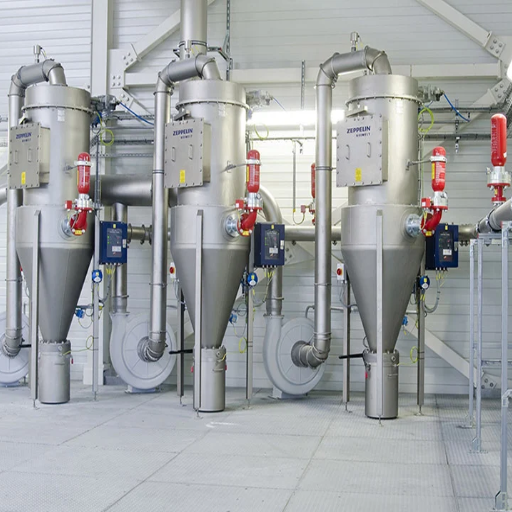
Several variations of explosion suppression systems are available for storage tanks, all working to prevent explosions and increase safety. Active explosion suppression systems that detect and extinguish explosions in their initial stages through a series of advanced sensors and extinguishing agents stand out as one of the best choices. Flame arrestors also come in handy because they do not permit flames to pass through and reach storage tanks while allowing free flow of gases. Furthermore, inert gas blanketing is a tried and tested way to keep the tank’s oxygen level low to prevent combustion. The proper system to be installed depends on the specific application of the storage tank, the nature of the material being stored, and relevant safety standards. One should go with the industry’s experts to implement the best solution to guarantee excellent safety and protection.
How Do Fire Protection Systems Work in Oil Storage Tanks?
Such fire-protection systems are crucial for the oil storage tanks as they prevent catastrophes by mitigating the fire hazards of flammable materials. Generally, such systems formulate several combinations of passive and active measures to control or extinguish the fires effectively.
Suppression systems with foam are the most commonly used. The system would spray fighting foam onto the surface of the oil to suffocate the flames and prevent re-ignition. For example, high-expansion foam systems work best with massive storage tanks by covering large areas quickly with a thin layer of protective foam. Industry information shows foam systems extinguish storage tank fires within minutes of deployment, thus limiting the damage and loss of operation time.
Fixed water spray or misting systems are commonly used to cool the tank’s surface and the nearby surroundings from heat radiation that provokes structural failure. These systems become crucial in curtailing heat radiation in accident situations and protecting nearby installations. Studies show that water spray systems can reduce surface temperature up to 70% from the initial temperature, thereby reducing the chance of ignition.
Modern fire-protection systems almost always include detection technology. Infrared and ultraviolet flame detectors combined with gas detection systems provide a state-of-the-art real-time monitoring of the tank environment. These technologies are capable of identifying any potential hazard of fire in an instant so that the nearby systems can respond swiftly. According to analyst data from the industry, early fire detection systems cut fire response times by as much as 30 percent, thus minimizing the overall effect of any incident.
Another essential part is the inert gas blanketing systems. These systems decrease the oxygen concentration in the tank headspace by introducing inert gases such as nitrogen and creating an environment where combustion cannot occur. This is particularly beneficial for preventing flash fires while filling and emptying the tanks.
In the design and implementation of these systems, it is essential that international fire safety standards, such as the NFPA (National Fire Protection Association) Standards, are complied with. Compliance with these guidelines should ensure that fire protection is adequate, reliable, and suitably designed for the particular risks associated with oil storage tanks.
Integrating modern detection techniques with strategic fire suppression methods yields majestic fire safety in oil storage facilities, safeguarding assets and souls.
What Are the Benefits of Pressure Relief Valves in Storage Tanks?
Pressure relief valves ensure proper safety and operational functioning of storage tanks in industries handling volatile substances like oil, gas, or chemicals. These valves maintain optimal pressure levels within a system by releasing pressure when it becomes excessive and avoid costly or dangerous situations.
Pressure relief valves prevent the possibility of explosion or structural failure. For example, suppose the pressure builds up inside a storage tank due to temperature variations or rapid filling. In that case, the relief valve opens to release the excess pressure to ensure the tank’s safety and the surrounding infrastructure. Studies show that pressure relief systems reduce the probability of catastrophic failures of pressurized tanks by up to 50%.
Another benefit is maintaining product integrity and minimizing environmental impact. An increase in pressure inside the tank could cause vapors or liquid contents to escape, resulting in product losses or ecological contamination. These valves thus help minimize pressure build-up, maintaining the integrity of the materials stored while ensuring the giant meets tight environmental laws and standards.
The relief valve prevents inefficiencies generated through failure and produces a steady and reliable source of good returns. Modern pressure relief systems are mated with smart monitoring technology, integrating real-time data collection with remote operation. This has greatly elevated safety protocols, as facility management can track pressure changes and respond promptly to any perceived irregularity.
Hence, research has indicated that pressure-relieving valves greatly enhance safety in the field, minimize losses, and instill confidence in productive capacity and operations.
How Do Regulations and Standards Affect Explosion-Proof Measures?
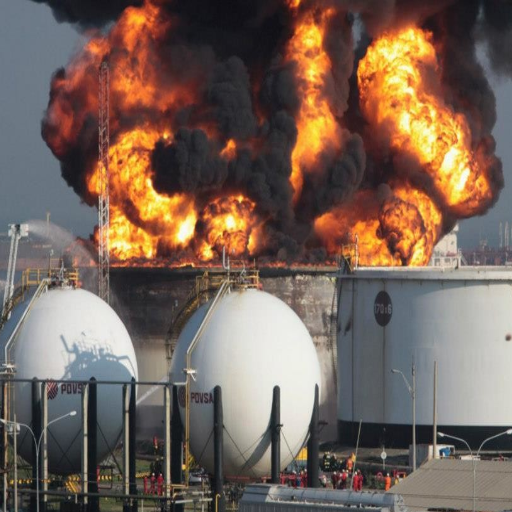
Regulatory industries are vital in ensuring explosive-proof measures operate effectively and appropriately. They set explicit criteria for designing, testing, and installing hazardous-environment equipment. Assessing these standards provides a material or system that has been tested, validated, and conforms to a safety benchmark, possibly reducing the risk of an explosion. OSHA, IEC, and other regulatory agencies act to provide a framework within which manufacturers and operators must work. Observing these standards and regulations helps with compliance with operational law and hence prioritizes safety toward workers’ lives and the protection of resources in environments where explosive occurrences may arise.
What are the requirements for oil tank explosion protection?
Explosion protection in oil tanks must be stringent regarding safety, materials, design standards, and shutdown procedures. Some of the key requirements are:
Use of Explosion-Proof Equipment: It is imperative to avoid sparks in oil tank working areas. All electrical and mechanical apparatus must be marked as explosion-proof; explosion-proof equipment includes fans, motors, sensors, and lights designed for use in a hazardous atmosphere.
Venting and Pressure Management: Emergency venting must be provided in the tanks to release excessive pressure from the source of fire or any internal reactions. Proper venting essentially prevents structural failures or catastrophic explosions resulting from overpressurization.
Maintenance and Inspection of Tanks: Besides their construction, regular evaluation has to be carried out by applying standard procedures, such as ultrasonic testing for corrosion and structural stiffness, thus ensuring that the tanks remain compliant with the codes and standards of safety-related issues. Find out if any leakage or thin spots might create an ignition hazard.
Fixed Fire Suppression System: Based on foam or gas suppression, these systems will instantly respond to flames. Research has also found foam systems effective fire suppressants since they cut off the oxygen supply and cool the affected areas.
Proper Grounding and Bonding: Properly grounding the tanks prevents a build-up of static electricity, which could ignite flammable vapors. Additionally, bonding between pieces of equipment lessens the possibility of sparks generated by electrical discharge.
Use of Flame Arresters: Flame arresters are placed on vent lines to prevent ignition and flame propagation into or from the vapors inside the tank. Their inclusion is significant in a very volatile environment with heavy vapor releases.
Compliance with Industry Standards: Standards such as API 650, API 2000, and NFPA 30 prescribe specific criteria for the construction, maintenance, and operation of oil storage tanks, respectively. For instance, API 2000 deals with safety requirements for venting.
Monitoring and Detection Systems: Advanced sensors should be used to continuously monitor the hydrocarbon vapor levels in and around tanks and detect and alarm in real time when dangerous levels are reached, thereby enabling preemptive action.
The successful implementation of all the above would significantly reduce the risk of oil tank explosions, ensuring personnel safety and protecting assets under high-risk conditions. Furthermore, innovative technology and automation intensify safety protocols, which provide data-driven insights and rapid emergency responses.
What are the Current Regulations for Oil Storage Tanks?
Oil storage tank laws vary from region to region. Yet, environmental protection and operator safety are the very basis of the regulations. One of the biggest international regulations is perhaps the EPA Spill Prevention, Control, and Countermeasure (SPCC) Rule of the United States. This so-called rule states that facilities must prepare and adhere to spill prevention plans and procedures through inspections, integrity testing, and secondary containment.
The EPA requires containment systems for aboveground storage tanks over 1,320 gallons or single tanks over 55 gallons that will hold the tank’s full capacity and precipitation to prevent any oil spill. The American Petroleum Institute has also set specific standards, such as API 653, which specifies the inspection, repair, and alteration of steel tanks for oil storage, emphasizing protection from corrosion and maintaining structural integrity.
The European Union’s Seveso III Directive addresses safety concerns for oil storage. Operators are charged with identifying risks and implementing efficient safety management systems. This may be done by ensuring that tanks are correctly designed, installing leak detection systems, and setting up emergency response measures.
On the other hand, countries such as Canada put in place strict guidelines through the Canadian Council of Ministers of Environment (CCME), for instance, requiring double-wall tanks or secondary containment to prevent contamination of the environment. Also, siting requirements, storage time limits, and distances to water bodies are strictly regulated.
These regulations emphasize preventing environmental damage, protecting nearby communities, and mitigating operational risks. Adherence to the laws will place companies in good standing with the law and portray a commitment to sustainability and safety in the oil and gas industry.
How Can Compliance with Regulations Reduce Explosion Hazards?
Adhering to various regulations to minimize the explosion hazards in the oil and gas industry by providing operational and safety guidelines is highly stressed. In some instances, the regulations might cite the correct handling and storage of flammable substances to prevent accidental ignitions. Equipment left unmaintained could prove hazardous through leaks; OSHA regulations or other regulatory standards can require such equipment to be maintained to keep functions safe, thereby minimizing risk.
From a statistical standpoint, heavy-duty compliance implementation has a safety record of minimizing the occurrence of industrial explosions and relevant accidents. Explosion-proof electrical equipment and ventilation that keep volatile gases from accumulating, as specified by API RP 500 or the Applicant’s ATEX directives, provide an example of such compliance. Hazard recognition and emergency response training are also often part of the compliance regime, effectively speeding up emergency response times.
This regulatory framework, inculcated into the industry’s day-to-day functions, reduces the likelihood of incurring catastrophic incidents, engendering an ambience conducive to safety and active risk prevention, ultimately safeguarding lives, property, and the environment.
What are the Best Practices for Oil Storage Tanks to Prevent Explosions?

Best practices that must be adhered to to prevent explosions in oil storage tanks include:
Inspection and Maintenance: While performing inspections frequently, one can always identify risks before they become actual hazards, such as corrosion, leaks, or structural weakness.
Proper Venting Systems: Tanks must have properly operating venting systems to allow safe escape of flammable vapors.
Monitoring and Detection Equipment: Advanced sensors should be deployed to constantly monitor the internal environment for temperature, pressure, and gas levels to catch any discrepancies as soon as possible.
Flame Arrestors and Pressure Relief Valves: Flame arrestors and pressure relief valves are installed to stop any ignition source and curb any pressure surge.
Static Electricity Prevention: Grounding and bonding should be enforced to prevent static electricity from becoming an ignition source.
Employee Training: The employees should be trained in emergency response and handling methods to minimize human error.
Implementing these best practices should significantly mitigate the risks of oil storage tanks, ensuring greater safety.
How Can Proper Sealing Techniques Prevent Fire Accidents?
Proper sealing methods are paramount for fire prevention as they limit the escape of flammable vapors and the chances of ignition. When oil storage tanks or the like remain inadequately sealed, VOCs pass into the surrounding atmosphere, which creates a hazardous, flammable environment. Research has shown that tanks with the best sealing systems, such as double-sealed floating roofs or vapor recovery systems, may cut VOC emissions by roughly 98%. These systems reduce fire hazards while complying with environmental laws and significantly improve operational safety.
Proper sealing prevents outside contaminants such as oxygen and moisture from entering the storage systems, which may present dangers of chemical reactions. These controlled environments in tanks ensure that no mixture capable of combustion occurs, hence sparking conditions for a fire. Regularly maintaining and inspecting seals is mainly to ensure they remain effective, as improper seals or damaged seals may compromise the system. Combining proper sealing systems with management that promotes their upkeep is the safest approach to preventing fire outbreaks and creating safe storage environments.
Why is Electrostatic Discharge Control Important?
ESD, tso cmang cu chung zawng zawn chung lawm, especially where Explosion-unstable, sensitive electronics or precision processes are involved. During a static charge buildup, any discharge can ignite explosive atmospheres, cause expensive damage to sensitive electronics, or sudden interruption of crucial operations. Recent data reflect losses in the millions annually in the semiconductor industry, due to ESD-induced failures; some studies suggest that almost 25-33% of all electronic device failures can be attributed to static discharge.
Hence, ESD control measures must be implemented to avoid these situations. Such measures include grounding systems, anti-static mats, ionizers, and good personnel training to prevent static buildup and discharges. Conversely, maintaining relative humidity above 30-50% in clean-room environments would also assist in minimizing static charge. Also, the industries dealing with explosive materials must strictly comply with ESD standards, including using intrinsically safe equipment and proper bonding and grounding of containers.
And if proper ESD control measures are considered a myth, we have operational downtime at best and explosions with loss of lives at worst. Hence, giving precedence to electrostatic discharge control plant operators’ equipment, the safety of the working personnel; in fact, it is one key factor that enhances overall operational reliability and safety.
Reference Sources
2. Basalt Fiber and Its Applications
3. Design of an Explosion-Proof Control System for Liquefied Gas Tank Leakage Based on Data Fusion
Frequently Asked Questions (FAQs)
Q: What are the basic requirements for an explosion-proof crude oil tank?
A: An explosion-proof crude oil tank must have safety features such as proper ventilation, measures to prevent explosion and fire, and systems to handle highly flammable liquids. It should also be constructed from materials resistant to corrosive and toxic substances.
Q: How does the size and shape of crude oil storage tanks impact their safety?
A: The size and shape of storage tanks are crucial in managing risks associated with flammable liquid storage. Larger tanks may require more stringent safety measures to prevent explosion accidents and ensure they can withstand normal operating conditions without risk of failure.
Q: What measures are used to protect against explosions and fires in oil tanks?
A: Measures include installing flame arresters, pressure relief valves, and maintaining proper spacing between tanks. Any electrical short or sparking near the tank area is also strictly prohibited.
Q: Why is it important to classify tanks for crude oil as hazardous?
A: Classifying tanks as hazardous ensures they have the appropriate safety features and protocols to handle the risks of storing inflammable and gaseous materials, thus preventing explosion accidents.
Q: What precautions should be taken when entering the tank area?
A: When entering the tank area, it is crucial to monitor for toxic gases, ensure all equipment is explosion-proof, and avoid any activities that might lead to an electrical short or ignition of flammable vapors.
Q: How can storage tanks containing oil or gas prevent spontaneous combustion?
A: To prevent spontaneous combustion, tanks must be kept cool, adequately ventilated, and free from oxidizing agents. Regular inspections and maintenance are essential to ensure no leaks or buildups of inflammable gases.
Q: What role does the spacing between oil tanks play in safety?
A: Proper spacing between oil tanks is crucial to prevent the spread of fire from one tank to another in case of an explosion or fire, thus minimizing the risk of catastrophic damage.
Q: Are any specific materials used to protect tanks from corrosive substances?
A: Tanks are often lined with materials resistant to corrosive substances, such as specialized coatings or alloys, to ensure longevity and safety under normal operating conditions.
Q: What is strictly prohibited in the tank area to ensure safety?
A: To prevent inflammable situations, activities that can lead to ignition, such as smoking or using non-explosion-proof electrical devices, are strictly prohibited in the tank area.


